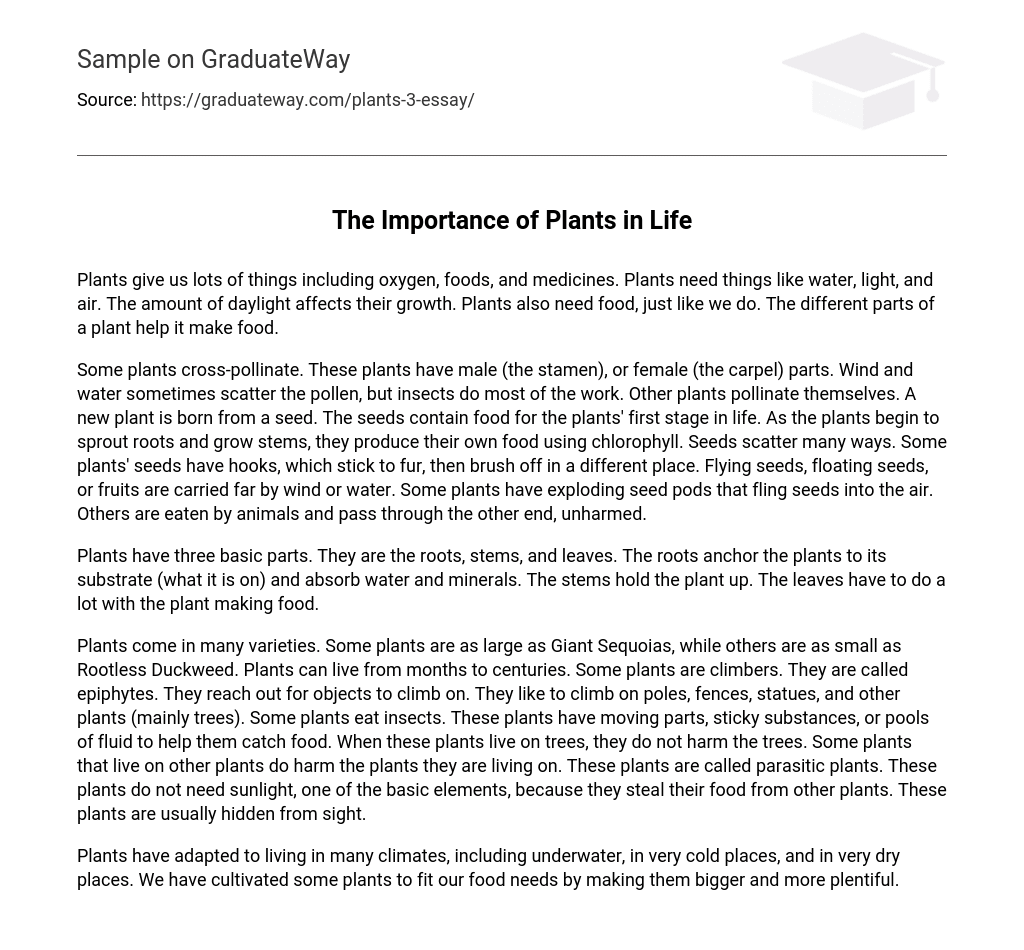Plants give us lots of things including oxygen, foods, and medicines. Plants need things like water, light, and air. The amount of daylight affects their growth. Plants also need food, just like we do. The different parts of a plant help it make food.
Some plants cross-pollinate. These plants have male (the stamen), or female (the carpel) parts. Wind and water sometimes scatter the pollen, but insects do most of the work. Other plants pollinate themselves. A new plant is born from a seed. The seeds contain food for the plants’ first stage in life. As the plants begin to sprout roots and grow stems, they produce their own food using chlorophyll. Seeds scatter many ways. Some plants’ seeds have hooks, which stick to fur, then brush off in a different place. Flying seeds, floating seeds, or fruits are carried far by wind or water. Some plants have exploding seed pods that fling seeds into the air. Others are eaten by animals and pass through the other end, unharmed.
Plants have three basic parts. They are the roots, stems, and leaves. The roots anchor the plants to its substrate (what it is on) and absorb water and minerals. The stems hold the plant up. The leaves have to do a lot with the plant making food.
Plants come in many varieties. Some plants are as large as Giant Sequoias, while others are as small as Rootless Duckweed. Plants can live from months to centuries. Some plants are climbers. They are called epiphytes. They reach out for objects to climb on. They like to climb on poles, fences, statues, and other plants (mainly trees). Some plants eat insects. These plants have moving parts, sticky substances, or pools of fluid to help them catch food. When these plants live on trees, they do not harm the trees. Some plants that live on other plants do harm the plants they are living on. These plants are called parasitic plants. These plants do not need sunlight, one of the basic elements, because they steal their food from other plants. These plants are usually hidden from sight.
Plants have adapted to living in many climates, including underwater, in very cold places, and in very dry places. We have cultivated some plants to fit our food needs by making them bigger and more plentiful.





